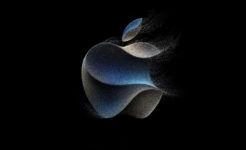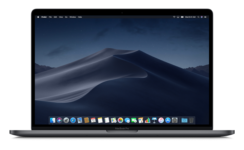
Setting up Apple Mac: How to proceed without mistakes
If you buy a used Apple Mac, you will need to set it up. To do so, you will need a reliable internet connection of at least 10 Mb/s. An Ethernet cable connection to the router would be preferred, as it’s faster and more reliable than Wi-Fi.
Hold the command option/alt and r keys down, and press the power button until something appears. Connect to the internet if on Wi-fi. On the screen, you will see a globe icon as Internet Recovery is downloaded from Apple’s (via Akamai’s) servers. This doesn’t work for some older machines which are capable of Internet Recovery. These older models usually have a slot for a 10.6 OS X install disk, or require a 10.6 boot USB key from Apple.
You will then see several options. First, select Disk Utility and select a disk on the left, then chose Erase. If a slider option appears, move the slider one spot to the right for a Zero erase. The Zero option maps off bad sectors on hard drives and also deletes any fragments of the previous owner’s data. However, if you are handling sensitive data, move the slider all the way to the right for a full delete. It may take a few hours for the Zero erase to complete the process. If it fails after a few hours, or seems to have stalled, it means that the hard drive is defective. In this case, it needs to be replaced by Apple.
If no slider for secure erase appears, it means your machine has an SSD or a Fusion/flash hybrid, for which there is no secure erase option available. If you chose to erase the drive, it doesn’t erase it in reality, it just reformats the disk. The old data can be then overwritten when you set up your Apple Mac.
Next, select the Partition tab and be sure that the drive has 1 Partition. Next, click the box to select the option for GUID and the format for OS X Extended Journaled, with the name MacintoshHD. From the File menu, select Quit Disk Utility and select the Install OS X option. Using your Apple ID and password, install OS X and Quit the installer which should reboot the machine.
Next, you will see a Welcome to Mac video animation. At this stage, you can select a language and setup your machine. If you enter your personal information at this stage or at the registration screen, Apple will personalize the machine with your name, including broadcasting it wirelessly (short range) via Bonjour. At this stage, you may wish to use an alias. If you later find out it hampers your use of Apple services, such as iCloud and Apple ID, you can create an additional user account and log in with your real name. You can adjust the personal information you used to fit your own personal security needs.
Once the accounts are set up, you log in to the App Store and upgrade OS X to the version that was on the machine previously. Internet Recovery installs the OS X version that came with the machine from the factory.
You can now install all of the additional software you need. Connect the external drive containing the files you backed up previously. Select the drive on the Desktop. Then, from the Finder Menu or right click > Get Info. At the bottom, click unlock and Ignore Permissions on this volume (By ignoring permissions, you’re allowing the files to be copied, but they are still not entirely assigned to your new account).
Once you have placed your files or imported them into the appropriate programs, you will need to create a bootable backup of the system state using a powered external drive and a copy of Carbon Copy Cloner. This bootable clone is accessible by holding the option/alt key down while booting the machine. The purpose of a bootable clone is to keep it disconnected and only update it when you know you have a pristine OS X boot volume, or before you do something major to the software, like a OS X update, program install, etc. You can boot from the clone and make more clones on more external drives, but they will only boot to that machine. You can use Apple’s Migration Assistant on a new machine or use MacDrive on a PC if you ever need too. Keep in mind that the first clone takes the longest, and the updates to the clone will be faster.
If Time Machine pops up and asks to make the external drive a TM drive, deny it, as you can make one after the clone is completed. Time Machine software is always running on a Mac. If you connect a blank external drive it will open a window asking if you would like to make one. Make sure the drive is free of data you want to keep and let Time Machine run.
After the bootable clone is created, you may need a backup solution that is always running, especially if you are prone to deleting files by accident. When setting up your Apple Mac, newbies should use Time Machine exclusively. Experienced Mac users can use bootable clones instead, or a combination of the two methods for more reliability when setting up your Apple Mac.
See also:
- Apple Encyclopedia: all information about products, electronic devices, operating systems and apps from iGotOffer.com experts.
- iGotOffer.com: the best place to sell my used MacBook online. Top cash guaranteed. Free quote and free shipping. BBB A+ rated business.






Facebook
Twitter
RSS